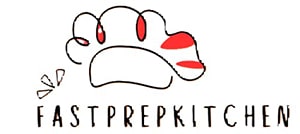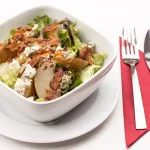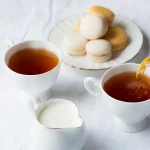The Best Fluffy Pancakes recipe you will fall in love with. Full of tips and tricks to help you make the best pancakes.
Butterfly cakes are the perfect combination of whimsy and elegance, making them a delightful choice for any celebration. Whether it’s a springtime garden party, a child’s birthday, or a special tea gathering, this stunning cake design is sure to captivate everyone’s attention. With their delicate, butterfly-shaped wings, vibrant colors, and playful decoration, butterfly cakes can be both simple and sophisticated, offering endless possibilities for creativity.
In this guide, we’ll take you through everything you need to know to create your own butterfly cake—step by step. From selecting the right ingredients to designing intricate, butterfly-themed decorations, we’ll cover it all. By the end, you’ll have the perfect recipe and techniques to create a butterfly cake that not only looks magical but tastes incredible too!
Essential Ingredients and Tools for a Butterfly Cake
Creating the perfect butterfly cake requires more than just a good recipe; it involves having the right ingredients and tools to bring your whimsical creation to life. Whether you’re a beginner or an experienced baker, understanding the essential components of a butterfly cake will set you up for success. Below, we dive into the key ingredients and tools you’ll need to make a beautiful and delicious butterfly cake.
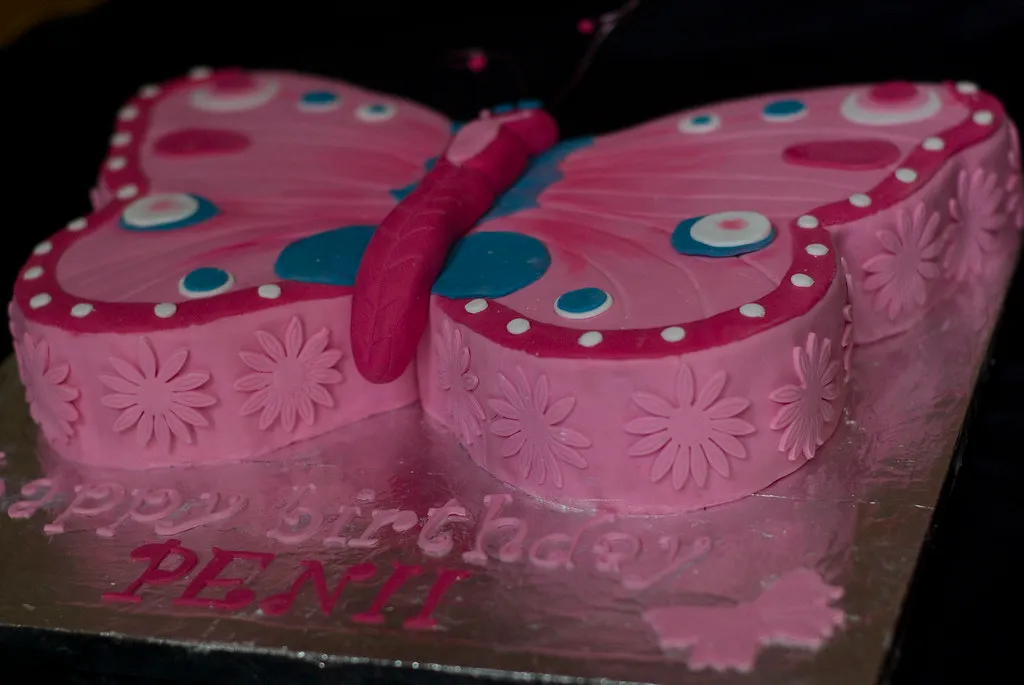
Buttercream Frosting: The Foundation of Your Cake’s Beauty
Buttercream frosting is the star of the show when it comes to both the texture and appearance of your butterfly cake. It’s not only delicious but also versatile for decorating. To get that smooth, elegant finish for your butterfly cake, ensure your buttercream is at the right consistency. A firm but spreadable texture is ideal for frosting the cake layers and creating intricate designs, like the delicate butterfly wings.
For an added flair, you can experiment with different flavors of buttercream, such as vanilla, chocolate, or even lemon, to match the overall theme of your cake. You can also incorporate gel food coloring to give your frosting vibrant, pastel hues that will complement your butterfly design.
Cake Layers: Choosing the Right Base for Your Butterfly Cake
The foundation of any great cake is its layers, and when it comes to a butterfly cake, they need to be sturdy yet light. Typically, a classic vanilla or chocolate cake is preferred for its simple, neutral flavor that pairs well with the sweet and colorful decorations.
However, feel free to get creative! If you want to add a twist, try using different flavor combinations, such as red velvet or lemon cake, to give your butterfly cake a unique taste. The texture is important too: choose a cake recipe that will hold up well when stacked and frosted without crumbling. A light, airy sponge or a moist, dense butter cake is often ideal.
Essential Tools for a Butterfly Cake
Before you start baking your butterfly cake, it’s important to have all your ingredients and tools in place. With the right preparation, the process will be much smoother, and your cake will turn out just as you envision it.
Tools You’ll Need
The tools you use are just as important as the ingredients, especially when crafting a cake with such intricate designs.
- Cake Pans: For a butterfly cake, you’ll need two round cake pans. These pans are the foundation for the wings and body. To ensure the cakes come out easily, make sure to grease your cake pans with butter or non-stick spray, and lightly dust them with flour to prevent the cake from sticking. You can also line the pans with parchment paper for easy removal.
If you don’t have the right pans yet, you can use tools like this Ninja Foodi Multi-Purpose Pan, which will give you the perfect bake for your butterfly cake.
Cake Decorating Tools: Must-Have Essentials for Precision
To achieve the perfect butterfly cake, the right tools can make all the difference. Here are some essential decorating tools you’ll need:
- Piping Bags and Tips: For creating intricate details, such as the fine lines on the butterfly wings or delicate flowers. The round tips (size 1 or 2) are perfect for detailing, while the star tips can be used for piping borders or adding texture to your frosting.
- Offset Spatula: A flexible, offset spatula is essential for spreading frosting smoothly over the cake layers and getting that clean, professional look.
- Butterfly Stencils or Templates: To ensure your butterfly wings are symmetrical and aesthetically pleasing, using a stencil or template can help. You can either purchase a ready-made stencil or create your own design for added customization.
- Edible Glitter and Sparkles: A touch of edible glitter or shimmer dust can bring your butterfly cake to life, making it even more magical. It’s perfect for adding a hint of sparkle to the butterfly wings or highlighting floral accents.
Edible Flowers: Adding Natural Beauty to Your Cake
To elevate the whimsy of your butterfly cake, consider using edible flowers as part of your decoration. Flowers such as violets, pansies, marigolds, and nasturtiums not only add a burst of color but also enhance the overall elegance of the cake. These flowers can be placed around the base of the cake, sprinkled on top, or even used to form a floral wreath around the butterfly wings.
When choosing edible flowers, make sure they’re safe for consumption. Opt for organic flowers free of pesticides, or buy from trusted sources that sell edible flower varieties. Edible flowers are an easy way to add an extra layer of beauty and charm to your butterfly cake, especially for a spring or garden-themed celebration.
Step-by-Step Guide to Baking and Assembling Your Butterfly Cake
Creating a stunning butterfly cake may sound like a challenging task, but with the right steps and a little patience, you can easily craft a show-stopping dessert that’s both beautiful and delicious. Here’s a detailed step-by-step guide to help you bake, assemble, and decorate your butterfly cake with confidence.
1. Baking the Cake: Setting the Foundation
The first step in creating your butterfly cake is baking the cake layers. Whether you’re using a store-bought cake mix or a homemade recipe, ensuring your layers bake evenly is crucial to achieving a beautiful final result.
- Prepare your pans: Grease your cake pans with butter or non-stick spray, and lightly dust with flour to prevent the cake from sticking. You can also line the pans with parchment paper for easy removal.
- Mix your batter: Follow your recipe instructions carefully. If you’re adding food coloring to your batter, do so now, keeping in mind the shades you’ll need for the butterfly wings and other decorations.
- Bake the layers: Bake your cake layers at the recommended temperature. For a smooth, even texture, rotate the pans halfway through the baking time. Use a toothpick to check if the cake is fully baked—insert it in the center, and if it comes out clean, the cake is done.
- Cool the layers: Allow the cakes to cool completely in the pans for about 10 minutes, then turn them out onto wire racks to cool completely before assembling.
2. Assembling the Cake: Stacking the Layers
Once your cakes are completely cooled, it’s time to assemble them into a tiered masterpiece. The way you stack your cake layers will influence the final shape and stability, so make sure to follow these steps carefully.
- Level the cakes: If your cake layers have domed slightly, use a serrated knife or cake leveler to trim them. This ensures that each layer sits flat and your cake is stable.
- Add frosting between layers: Place the first cake layer on your cake board or platter. Using an offset spatula, spread an even layer of buttercream frosting over the top. Repeat this process for each layer of cake, stacking them neatly as you go.
- Secure the layers: If you’re stacking multiple layers, consider using wooden dowels or cake straws for extra support. Insert them into the center of the cake to prevent the layers from shifting or collapsing, especially for taller cakes.
3. Creating Butterfly Wings: Shaping and Decorating
Now comes the fun part—creating the butterfly wings! This is where your cake will truly start to resemble a work of art.
- Shape the wings: You have a couple of options for creating the butterfly wings. You can either use a butterfly stencil and trace the design onto the top layer of the cake, or you can freehand the shape of the wings using buttercream or fondant. If you prefer a more intricate design, you can even use colored sugar or edible glitter to add dimension to the wings.
- Buttercream wings: If you’re using buttercream to create the wings, use a piping bag fitted with a fine tip (such as #1 or #2) to carefully pipe the outline of the wings. Start by outlining the top of the wings, then fill in the shape with smooth buttercream. You can use different shades of frosting to create gradients or a multi-colored effect for a more vibrant design.
- Fondant wings: If you prefer fondant for a smoother, more polished look, roll out the fondant and use a butterfly wing-shaped cutter or stencil. Once cut, carefully place the fondant wings onto the cake, gently smoothing them into place.
4. Adding the Final Touches: Decorating the Cake
Now that the butterfly wings are in place, it’s time to add the final touches to your masterpiece.
- Details on the wings: Use a fine piping tip to add delicate details such as veins and swirls on the wings, mimicking the natural patterns you’d see on a butterfly. You can use a contrasting color like black, gold, or silver to highlight these details.
- Edible flowers and decorations: Add edible flowers (like pansies or violets) around the base of the cake or even along the wings for an extra layer of beauty. You can also add sparkles, edible glitter, or shimmer dust to make the wings sparkle in the light.
- Top decoration: Consider placing a small, decorative butterfly on top of the cake. This could be a fondant butterfly, a plastic topper, or even a hand-painted design. The top should complement the wings on the sides, tying the theme together.
Tips for Perfecting Your Butterfly Cake
- Consistency is key: Make sure your buttercream is the right consistency for decorating. Too stiff, and it’ll be difficult to pipe; too soft, and it won’t hold its shape. Aim for a firm but spreadable texture.
- Take your time: Butterfly cakes require patience, especially when decorating the wings. Don’t rush through this part—take your time to get the details just right.
- Practice your piping: If you’re new to piping, consider practicing on parchment paper before working directly on the cake. This allows you to get comfortable with your piping techniques and make adjustments as needed.
Creative Butterfly Cake Decorating Ideas
Decorating your butterfly cake opens up a world of possibilities to infuse your personal style, creativity, and the theme of your event into the design. Butterfly cakes are highly versatile, allowing you to play with colors, textures, and patterns. Whether you want a classic, elegant cake or something bold and whimsical, there are countless decorating ideas that will make your butterfly cake truly stand out. Below are some creative ways to take your butterfly cake to the next level.
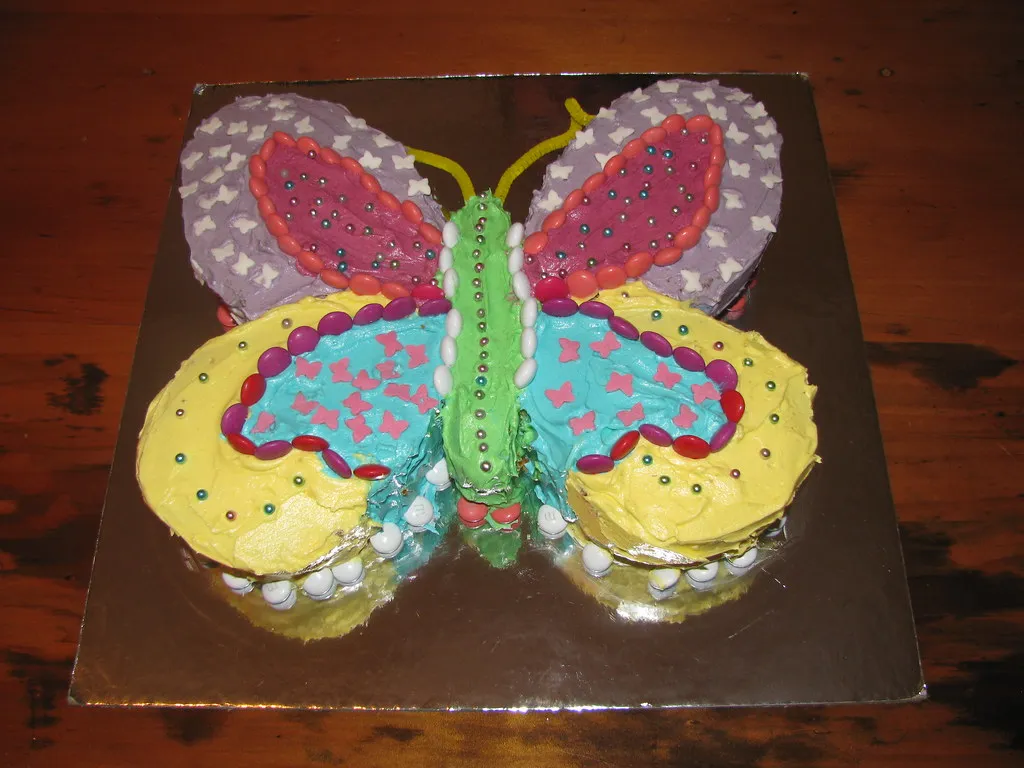
1. Ombre Butterfly Wings: A Colorful Fade
Ombre effects are a popular trend in cake decoration because they create a stunning visual gradient of colors that adds depth and interest to your butterfly wings. Whether you choose soft pastels for a springtime vibe or bold, vibrant hues for a more dramatic look, the ombre effect can easily be achieved with buttercream.
- How to create it: Start by dividing your buttercream into several bowls, each with a different amount of food coloring to create varying shades of one color. Begin by piping the darkest color near the outer edges of the wings and gradually work your way to lighter shades toward the center.
- Tip: Use a spatula or offset spatula to blend the colors slightly for a smooth transition, ensuring the ombre effect is soft and fluid rather than stark.
2. Metallic Butterfly Wings: Glamour with a Touch of Shine
For a sophisticated and glamorous look, consider adding metallic elements to your butterfly cake. Edible gold or silver leaf can instantly elevate the design, giving your cake a luxurious touch that’s perfect for weddings, anniversaries, or upscale events.
- How to create it: After you’ve piped or placed your butterfly wings, gently apply edible gold or silver leaf to the tips or center of the wings. You can also dust the wings with edible metallic powder to add a subtle shimmer.
- Tip: To create contrast, pair metallic wings with a matte-colored frosting base for a more dramatic and striking effect.
3. 3D Butterfly Wings: Adding Depth and Dimension
If you want your butterfly wings to look like they’re coming to life, go for a 3D effect. This can be achieved by layering fondant or creating wing structures that stand up from the cake, creating a sense of movement and realism.
- How to create it: Roll out a thin sheet of fondant and cut out the butterfly wing shapes using a template. Once the pieces are cut, you can shape them by gently curving the edges and allowing them to set so that they become firmer. Attach them to the cake using frosting or edible glue to make them stand upright or extend out from the sides.
- Tip: To add even more realism, paint the wings with edible food colors or airbrush them for a more detailed and lifelike finish.
4. Butterfly Garden: A Floral-Inspired Cake
Transform your butterfly cake into a whimsical butterfly garden by incorporating a variety of edible flowers, creating a perfect setting for your butterflies to “land.” This design works wonderfully for garden parties, spring celebrations, or outdoor weddings.
- How to create it: Place edible flowers such as pansies, violets, or marigolds around the base of the cake, and scatter a few over the top. You can also pipe small, delicate buttercream flowers to add variety and texture. Pair these flowers with your butterfly wings for a cohesive and charming look.
- Tip: Ensure that the flowers are food-safe and organic. For an added touch, try adding a few sugar flowers or even sugar butterflies scattered throughout the garden for a playful vibe.
5. Rainbow Butterfly Cake: A Bright and Cheerful Design
A rainbow butterfly cake is perfect for brightening up any event. The vibrant colors not only make the cake visually stunning, but they also symbolize joy and celebration. You can create a fun and colorful butterfly cake that appeals to both children and adults alike.
- How to create it: To achieve the rainbow effect, pipe different sections of the wings in various bright colors (red, orange, yellow, green, blue, indigo, and violet). You can use both piping and fondant to create a colorful, striped design. Alternatively, bake individual cake layers in rainbow colors and stack them inside to create a surprise rainbow effect when the cake is cut.
- Tip: Add edible glitter to the wings to give them a little sparkle, making the rainbow effect even more magical.
6. Hand-Painted Butterfly Wings: Elegant and Artistic
If you have artistic skills or enjoy a challenge, hand-painting the butterfly wings is a fantastic way to add intricate details and personal flair to your cake. Hand-painting allows you to create stunning, realistic butterfly wings with rich, vibrant colors and fine details.
- How to create it: Use edible food colors or edible food paints to hand-paint the wings directly onto the fondant or buttercream. Start with a light outline of the butterfly wing pattern and then gradually fill it in with vibrant shades. You can even add fine details like veins and small dots to mimic real butterfly wings.
- Tip: Use a fine-tipped paintbrush for precision and take your time—this technique may take longer but will yield a truly unique and artistic result.
7. Butterfly Cake Toppers: Easy yet Stunning
If you prefer a simpler approach, using butterfly cake toppers is an easy way to add a professional touch without the complexity of hand-decorating the entire cake. You can choose from edible or non-edible butterfly toppers in various materials such as fondant, sugar, or plastic.
- How to create it: Simply place your butterfly topper on top of the cake, or arrange multiple small toppers along the edges of the wings. You can choose from realistic butterfly designs or whimsical ones to match your theme.
- Tip: For an added effect, surround the topper with a ring of edible flowers, piped buttercream, or delicate sugar crystals to tie everything together.
Final Touches to Enhance Your Butterfly Cake
- Textural Elements: Don’t forget about texture—adding small edible beads, sprinkles, or sugar crystals can give your cake depth and sparkle.
- Butterfly Body: A small, detailed butterfly body made of chocolate or fondant placed at the center of the wings can complete your design and make your butterfly look more realistic.
- Personalization: If you’re making the cake for a special occasion, consider adding a personalized message or custom decorations, like the birthday person’s name, for that extra touch.
Common Mistakes to Avoid When Making a Butterfly Cake
While creating a butterfly cake can be a fun and rewarding experience, it’s easy to make mistakes along the way. Whether you’re a beginner or an experienced baker, avoiding common pitfalls will help ensure that your cake turns out beautifully and tastes as amazing as it looks. Here are some of the most common mistakes people make when making a butterfly cake and how to avoid them.
1. Skipping the Cooling Process
One of the biggest mistakes when baking a cake is not allowing the cake layers to cool completely before assembling. Trying to frost or decorate a warm cake can cause your buttercream to melt, resulting in a messy, uneven finish.
- How to avoid it: After baking your cake layers, let them cool in the pans for about 10 minutes before transferring them to a wire rack to cool completely. This will ensure that your cake layers are firm and won’t crumble or fall apart when you start decorating.
2. Overmixing the Cake Batter
Overmixing your cake batter can lead to a dense and heavy texture, which is less than ideal for a light, fluffy cake. This is especially important when making a cake that will hold intricate decorations like butterfly wings.
- How to avoid it: Mix your cake batter just until the ingredients are incorporated. Be careful not to overbeat the mixture, especially once the flour is added. A few lumps are fine, as long as the batter is mostly smooth.
3. Incorrectly Measuring Ingredients
Baking is a precise science, and incorrect measurements can drastically affect the texture and structure of your cake. Whether it’s using too much flour, not enough sugar, or the wrong type of fat, these errors can lead to a less-than-ideal cake.
- How to avoid it: Always measure your ingredients carefully using the correct tools. For dry ingredients like flour, spoon the ingredient into the measuring cup and level it off with a knife. For liquids, use a glass measuring cup at eye level to ensure accuracy.
4. Using the Wrong Type of Frosting
The frosting you choose is key to achieving the perfect look for your butterfly cake. If you use a frosting that’s too thin or too thick, it won’t hold up well under the weight of your cake layers or decorations. This can lead to a poor structure and a lack of sharpness in your butterfly wings.
- How to avoid it: Use a stiff buttercream or cream cheese frosting for a more stable and smooth finish. These types of frostings are best for intricate piping and fondant work, as they can hold their shape without melting or sliding off the cake.
- Tip: If you want a glossy finish, consider using fondant for the butterfly wings, but be sure to cover the entire cake with a layer of buttercream before applying the fondant for better adhesion.
5. Not Leveling Your Cake Layers
If your cake layers are uneven, they won’t stack neatly, which can cause your butterfly wings to look distorted or unbalanced. This can result in a lopsided cake, which may be especially noticeable in a design as intricate as a butterfly.
- How to avoid it: Once your cakes are baked and cooled, use a serrated knife or cake leveler to carefully trim the tops of each layer so they’re even. This will give you a solid base for stacking your layers and allow the butterfly wings to be more symmetrical.
6. Overloading on Decorations
While it’s tempting to load up your butterfly cake with a multitude of decorations, sometimes less is more. Overcrowding the cake with too many colors, flowers, or intricate details can take away from the elegance and beauty of the butterfly wings and make the design feel chaotic.
- How to avoid it: Stick to a cohesive color palette and design scheme. Focus on a few key elements that highlight the butterfly wings, such as edible flowers, metallic accents, or carefully piped details. Less is often more, so be selective with the elements you include.
7. Using Fondant that’s Too Thick or Thin
Fondant is a popular choice for butterfly cake decorating because of its smooth and sleek appearance. However, if the fondant is too thick, it can overwhelm the cake, and if it’s too thin, it may tear or sag, ruining the delicate butterfly wings you’ve worked so hard on.
- How to avoid it: Roll your fondant to an even thickness (about 1/8-inch thick) and make sure it’s smooth as you apply it. Use a rolling pin and dust with a little powdered sugar or cornstarch to prevent sticking. If the fondant tears, gently patch it up or start over with a new piece.
8. Not Using Enough Cake Support
If you’re making a multi-layered butterfly cake, you may need to use cake supports to ensure the structure remains stable. Failing to use dowels or straws to support the upper layers can cause the cake to collapse or shift, leading to a messy and uneven appearance.
- How to avoid it: For taller cakes, insert wooden dowels or plastic cake straws into the center of the stacked layers before adding the top layers. This will provide stability and ensure the cake doesn’t collapse under its own weight.
9. Not Piping the Buttercream Smoothly
Buttercream piping is one of the most important aspects of creating beautiful butterfly wings. If the buttercream is too soft or too thick, it can lead to uneven lines and a rough texture that detracts from the overall design.
- How to avoid it: Make sure your buttercream is the right consistency—firm but spreadable. If it’s too soft, refrigerate it briefly before piping; if it’s too stiff, add a small amount of milk or water to loosen it up. Use an offset spatula or a piping bag with a fine tip for smooth, even lines.
10. Not Allowing the Cake to Set Before Serving
After decorating your butterfly cake, you might be eager to cut into it right away, but cutting a freshly decorated cake can cause the frosting and fondant to smear or shift, ruining the design.
- How to avoid it: Allow the cake to set for at least 30 minutes to an hour after decorating. This gives the frosting time to firm up, and any fondant details will have time to set properly before you cut into it.
Final Thoughts
Avoiding these common mistakes will help you achieve a beautiful and structurally sound butterfly cake that’s sure to impress. Remember that baking and decorating are part of the fun, and even small mistakes can be corrected with a little creativity. By following these tips, you’ll be able to create a butterfly cake that’s not only gorgeous but also delicious!
Butterfly Cake for Every Occasion
A butterfly cake is not only a visually striking dessert, but it can also be a versatile choice for a wide range of occasions. Whether you’re hosting a birthday party, a bridal shower, or a simple afternoon tea, this whimsical cake can be customized to fit any celebration. Here’s how to adapt the butterfly cake for various special events and occasions.
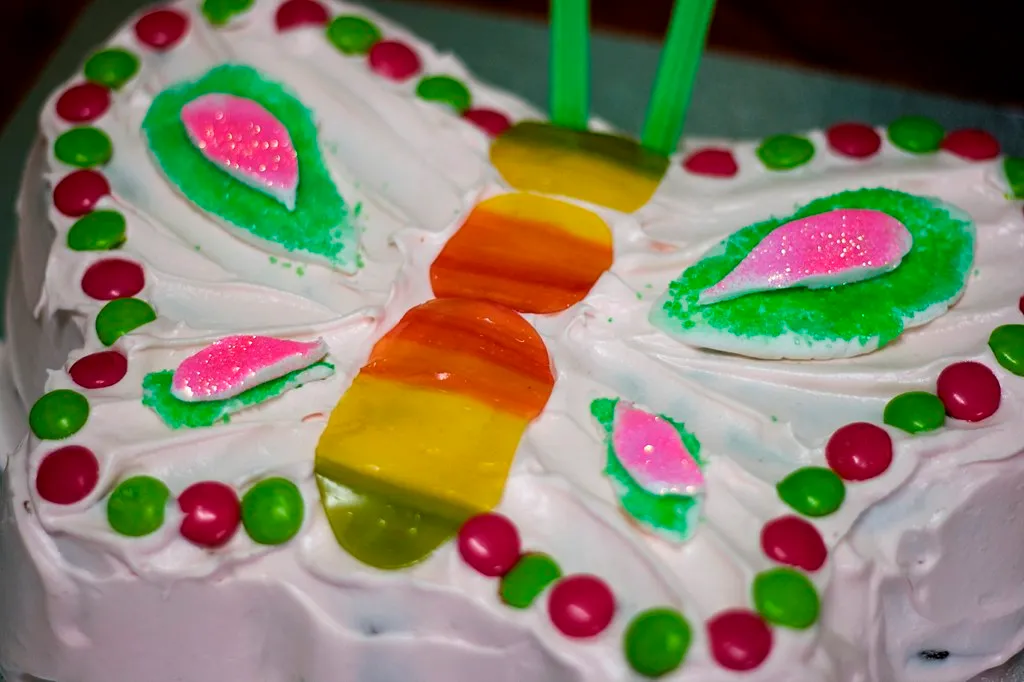
1. Birthday Parties
Butterfly cakes are a delightful choice for birthday celebrations, especially for children and nature lovers. Their vibrant colors and intricate wing designs instantly capture attention, making them a perfect centerpiece for any birthday table. A butterfly cake can be made in any flavor—chocolate, vanilla, or even something more exotic like lemon or strawberry—making it a treat that appeals to all ages.
- Customization Tips: For a child’s birthday party, you can add edible glitter or colorful candies to enhance the playful vibe. Use pastel or bright colors for the wings to match the party theme, or incorporate the birthday child’s favorite colors. For a more elegant touch, you can use metallic colors or edible gold leaf to create a refined, sophisticated design.
2. Baby Showers
Butterfly cakes are ideal for baby showers, symbolizing the beauty and new beginnings that a baby brings into the world. Soft pastel shades like blush pink, baby blue, lavender, and mint green are perfect for baby shower-themed butterfly cakes. The delicate details and light design add an air of sweetness that’s fitting for such a special occasion.
- Customization Tips: Consider using soft buttercream to create a smooth, delicate look or fondant for more detailed decorations. You can also incorporate baby-themed elements like small fondant baby booties, rattles, or even a small butterfly figure perched on the cake. The wings can be decorated with gentle floral patterns or patterns that reflect the theme of the baby shower, such as tiny stars or polka dots.
3. Weddings
A butterfly cake can be transformed into a stunning wedding cake with a few elegant touches. Butterfly cakes for weddings are typically designed with a refined, minimalist aesthetic. They symbolize transformation and beauty, which are perfect representations of the love and new life the couple is embarking on.
- Customization Tips: For weddings, opt for elegant shades like white, ivory, blush, or metallic tones such as gold, silver, or rose gold. The butterfly wings can be adorned with intricate lace patterns, beaded details, or delicate floral arrangements made of fondant or sugar paste. For a romantic touch, place edible flowers or small sugar-crafted butterflies on the top or along the sides of the cake. You can also use a tiered structure for a more sophisticated presentation.
4. Tea Parties and Afternoon Gatherings
Butterfly cakes are the perfect addition to any afternoon tea or casual gathering. Their light, airy texture and visually pleasing design make them an ideal dessert to serve alongside tea sandwiches, scones, and other small bites. A butterfly cake’s cheerful and inviting design brings a sense of charm to a simple afternoon with friends.
- Customization Tips: Keep the decorations light and airy, with pastel-colored buttercream or frosting. You could add edible flowers or delicate sugar butterflies on top of the cake to create a whimsical effect. Consider serving individual slices or small, single-layer butterfly cakes for a more personal and elegant touch at a tea party.
5. Garden Parties
Butterfly cakes are especially fitting for garden parties, where nature and beauty are the central themes. Their butterfly-inspired design perfectly complements outdoor settings, where vibrant flowers and lush greenery create a picturesque atmosphere. The colors and designs of a butterfly cake can mirror the natural beauty of the garden surroundings.
- Customization Tips: Use floral decorations to enhance the butterfly theme—think edible flowers, tiny sugar roses, or flower petals scattered across the cake. For a garden party, the cake could feature butterfly wings in shades that reflect the colors of the garden flowers, such as lavender, rose, sunflower yellow, or garden green. You could also add a butterfly figurine on top of the cake to represent the theme of nature’s beauty.
6. Anniversaries and Milestone Celebrations
A butterfly cake can also be a symbolic choice for anniversaries or milestone celebrations, representing the journey and transformation of a relationship over time. Whether it’s a 10th wedding anniversary or a special work anniversary, the butterfly cake conveys a sense of growth, change, and beauty.
- Customization Tips: For anniversaries, you can tailor the cake’s color scheme to match the couple’s wedding colors or the theme of the celebration. Consider incorporating a tiered butterfly cake with elegant fondant decorations, such as lace piping, edible pearls, or personalized messages on each tier. You could even design the butterfly wings with subtle, meaningful patterns that reflect the couple’s relationship or shared experiences.
7. Easter or Spring Celebrations
Easter and springtime celebrations are another perfect opportunity to showcase a butterfly cake. The butterfly symbolizes renewal, change, and the arrival of warmer weather, making it a lovely choice for these occasions. It pairs beautifully with pastel-colored décor and seasonal spring flowers.
- Customization Tips: Use pastel-colored frosting like pale pink, mint, lavender, or baby yellow to decorate the wings. You can also add spring-themed edible accents such as sugar daisies, lilacs, or lavender sprigs to the cake’s base. For an extra touch of spring, incorporate small fondant butterflies in different shades of the season.
8. Mother’s Day
A butterfly cake is a lovely way to honor mothers on Mother’s Day. The delicate beauty of the cake represents the love and care that mothers give to their families. A butterfly cake for this occasion can be designed to be both soft and elegant, making it a fitting tribute to the special woman in your life.
- Customization Tips: Consider using soft, romantic shades like pinks, purples, and creams, along with elegant touches such as edible pearls, sugar butterflies, or rose petals. A cake adorned with a personalized message like “Happy Mother’s Day” or “Love You, Mom” can be a sweet and thoughtful way to celebrate the occasion.
